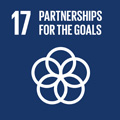- Docente: Paola Cordera
- Credits: 6
- SSD: L-ART/04
- Language: English
- Teaching Mode: Traditional lectures
- Campus: Bologna
- Corso: Second cycle degree programme (LM) in Visual Arts (cod. 9071)
-
from Nov 11, 2024 to Dec 20, 2024
Learning outcomes
Students achieve in-depth and up-to-date knowledge of today's concept of Museum and of its most recent transformations, both from theoretical-methodological and socio-historical points of view. In particular, they become familiar with the evolution of museology and museography and the major international figures who have contributed to redefine the museum. They develop also useful skills to understand the relationship between museums and the city, as well as with their role in contemporary society.
Course contents
The 30-hour course takes place in the first semester (6 CFU).
Museums are currently renegotiating their role within society, proposing new typological and cultural models in response to changes in culture, economics, and politics.
Focusing on the study of the main Italian and international museums, the course will discuss issues concerning the contemporary museum in a broader framework – embracing social, philosophical, economic, and political values – and in light of current cultural and historiographic debates.
Museums of Natural History, Anthropology, Science, Technology, History, and Art will be addressed from a variety of approaches that explore the institution and its practices with respect to governance, colonialism, nationalism, class, gender, ethnicity, and community. While new information technologies as well as new rituals of visit and appropriation are on their way, the course will address the implications of the new role museums play in learning, wellbeing, community building, and social justice in contemporary society.
Drawing from the legacies of Enlightenment-based scientific humanism and its imperial underpinnings, the course will explore the role of museums in developing, representing, and showing diversities of beliefs, histories, and narratives. It will consider their power to retain, discard or partially shape what is remembered and how. Part of the course will be addressed to look to hidden and unspoken stories and discuss potential inclusive counter-narratives.
Readings/Bibliography
Students are required to study at least 2 books from the following course reading list as follows:
1 book from Section One
1 book from Section Two
Students who do not attend class will complete their preparation with 1 book from Section Three.
Section One:
- A. McClellan, The art museum from Boullée to Bilbao, Berkeley (CA), University of California Press, 2008.
- V. Newhouse, Towards a New Museum. Expanded Edition, New York, The Monacelli Press, 2007
- C. Saumarez Smith, The Art Museum in Modern Times, London, Thames and Hudson, 2021
Section Two:
- I. Chambers, A. De Angelis, C. Ianniciello, M. Orabona (eds.), The Postcolonial Museum The Arts of Memory and the Pressures of History, Taylor & Francis Inc., 2017
- R. Cull, D. Cull, Museums and Well-being, London-New York, Routledge, 2023
- I. Edenheiser, E. Tietmeyer, S. Boersma (Eds.), What’s Missing? Collecting and Exhibiting Europe, Berlin, Reimer Dietrich, 2021
- S. MacLeod (ed.), Reshaping Museum Spaces: architecture, design, exhibitions, London-New York, Routledge, 2005
- N. Thomas, The return of curiosity, London, Reaktion Books, 2016
Section Three:
- J. Marstine (ed.), New Museum Theory and Practice: an Introduction, Hoboken (NJ), John Wiley & Sons, 2008
- A. McClellan (ed.), Art and its publics: Museum Studies at the Millennium, Hoboken (NJ), Wiley, 2008
- S. Macdonald, A Companion to Museum Studies, Malden (MA)-Oxford-Victoria, Blackwell Publishing, 2006
Teaching methods
Lectures and in-class debates. Students will be encouraged to visit local museums
Assessment methods
Oral exams will consist of one formal conversation based on topics discussed during class seminars, lectures, and bibliography (only bibliography for those students who will not attend classes).
Successful candidates will demonstrate an adequate knowledge of the contents covered during the course and the material indicated in the recommended readings/bibliography. They will demonstrate critical ability to understand and explain the theoretical approaches to the museum.
1. It will be graded as excellent the performance of those students demonstrating to be able to thoroughly analyze the text and to put it into an organic view of the topics discussed during the course. The proper use of the specific language during the examination will be also essential.
2. It will be graded as discrete the performance of those students with mostly mnemonic knowledge, no in-depth analysis capabilities and a correct, but not always appropriate, language of the recommended texts.
3. It will be graded as barely sufficient the performance of those students with approximate knowledge, superficial understanding, poor analytical capabilities, and a not always appropriate language.
4. It will be graded as insufficient the performance of those students with learning gaps, inappropriate language, no orientation within the recommended bibliography.
Teaching tools
Powerpoint slides and videos
Office hours
See the website of Paola Cordera
SDGs



This teaching activity contributes to the achievement of the Sustainable Development Goals of the UN 2030 Agenda.
